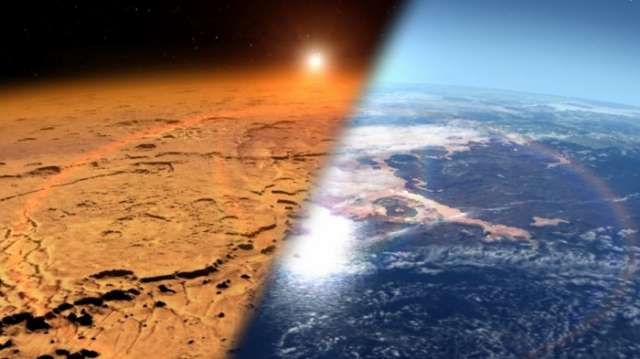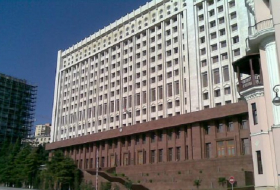Previous analysis of Hesperian rocks suggested the Martian climate sometimes warmed enough to allow lakes to form and last for more than 3,000 years, according to a new study led by Edwin Kite, a planetary scientist at University of Chicago. Prior work had generally struggled to explain what events could result in lake-forming climates that were both rare and long-lasting. For instance, while volcanism could emit bursts of "greenhouse gases" that trap heat from the sun, the impact of such eruptions would not last very long, according to the paper.
Now, Kite's team has found that the existence and persistence of these lakes could be explained by thawing caused by explosive bursts of the potent greenhouse gas methane from under the Martian surface, he told Space.com.
Unlike Earth, Mars does not have a large moon to keep it from wobbling (although it does have two small moons). As such, the Red Planet's axis of rotation can tilt in a chaotic, unpredictable manner, leading to regular changes of temperature, according to the study.
The researchers suggest that, during warming periods, the amount of ice covering Mars shrank. This led to materials known as clathrates hidden underneath the Martian surface to decompose. Clathrates are made of methane trapped in cages of ice.
As clathrates destabilize, they can explosively release methane. One such Martian outburst could have released about 200 trillion tons (180 trillion metric tons) of methane into the atmosphere over the course of millennia, Kite said.
"The amount of clathrate that we envisage breaking down over a geologically brief interval — 10,000 years or less — if spread evenly over the surface area of Mars, would be about the thickness of a dinner plate," Kite said.
Such outbursts could have raised temperatures on Mars by 9 to 18 degrees Fahrenheit (5 to 10 degrees Celsius). Although this methane would gradually break down in the Martian atmosphere, the researchers estimated that each warming episode could have persisted for up to a million years.
Prior work suggests that intermittent bursts of methane currently seen on Mars might come from decomposing clathrates, Kite said. "This can be tested in the near future using data from the NOMAD instrument on the ExoMars Trace Gas Orbiter, which is acquiring data from Mars orbit now," he added.
The scientists detailed their findings online Oct. 2 in the journal Nature Geoscience.
More about: #Mars















-1741770194.jpg&h=190&w=280&zc=1&q=100)






-1741765030.jpg&h=190&w=280&zc=1&q=100)

























